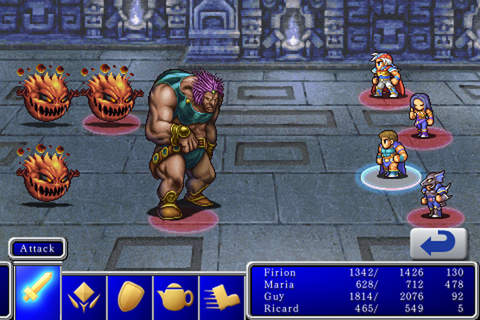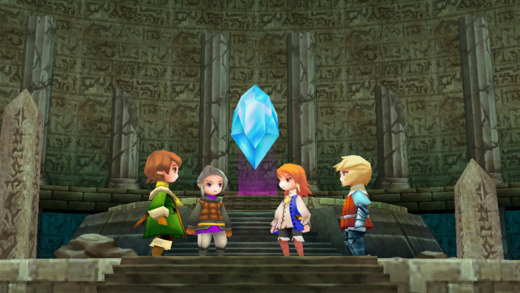You can play a lot of great role-playing game from Square Enix on your mobile device, but it’s kind of hard to remember exactly which are available.
The Japanese publisher and developer has a huge catalog of classic RPGs, and it’s a bit random and sporadic about which get tablet and phone ports. For instance, it recently released Dragon Quest IV for iOS in New Zealand (meaning a U.S. debut is imminent) while skipping the first three entries in that series. Also, some of its games, especially the Final Fantasys, have had so many remakes and releases that it’s a little confusing knowing exactly what you’re getting with the mobile version.
That’s why we made this list for you. It details all of Square Enix’s mobile ports of its best classics while also telling you which version they mostly take after.
Final Fantasy
Original platform: Nintendo Entertainment System (1987)
Mobile platforms: Android, iOS, and Windows
What it is: Based on the PSP version, which added improved graphics, the original Final Fantasy is light on plot but lets you create your own party of mages, warriors, and thieves. It’s not as enthralling as later installments in the series, but it’s interesting to discover the famous franchise’s humble roots.
Final Fantasy II
Original platform: Famicom (1988)
Mobile platforms: Android and iOS
What it is: As with the first Final Fantasy, Square Enix based the mobile port of Final Fantasy II off the PSP version. Unlike its predecessor, FFII featured set characters with distinct personalities and overall had more story elements. It also had a bizarre leveling system that increased your strength in abilities the more you used them. If you want strong magic, you need to cast a lot of spells.
Final Fantasy III
Original platform: Famicom (1990)
Mobile platforms: Android, iOS, and Windows
What it is: The mobile version of Final Fantasy III actually takes after the DS remake. Unlike the other 8-bit remasters, it features 3D character models and environments. The DS version also gave official names and personalities to the previously blank slate cast of characters. Notably, Final Fantasy III was the first game in the series to introduce the Job system, which you use to change a character’s class any time outside of battle.
Final Fantasy IV
Original platform: Super Nintendo (1991)
Mobile platforms: Android and iOS
What it is: Final Fantasy IV is probably the most ported entry in the series, with rereleases showing up on the PlayStation, Game Boy Advance, Nintendo DS, and the PSP. Square Enix based the mobile version off of the DS release, so it features 3D graphics similar to the mobile version of Final Fantasy III. The game itself is like a bigger, better version of Final Fantasy II, with its distinct characters and an epic story. It’s also the first in the series to use the Active Time Battle (ATB) system, which added some urgency to the turn-based battles by giving each character a bar that had to fill before they could take a turn.
Final Fantasy V
Original platform: Super Famicom (1992)
Mobile platforms: Android and iOS
What it is: Unlike the previous mobile ports, Final Fantasy V actually got a new graphical lift just for these releases. Instead of a 3D makeover like Final Fantasy III and FFIV, FFV replaces its sprites with new 2D artwork, a move that was somewhat controversial for fans of the original. Otherwise, this version shares the features and translation from the Game Boy Advance release. As for the game, if Final Fantasy IV took after FFII, Final Fantasy V is the successor to FFIII. It features the return of the Job system, but it adds even more flexibility and room for customization.






